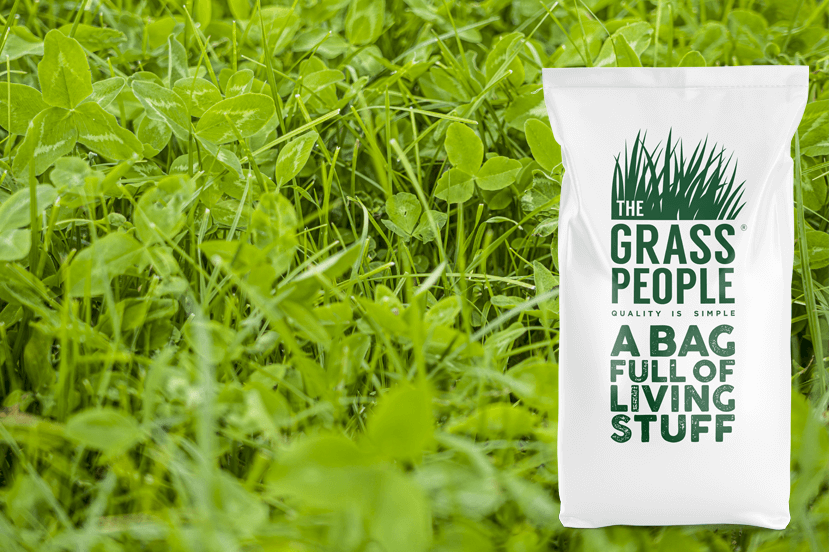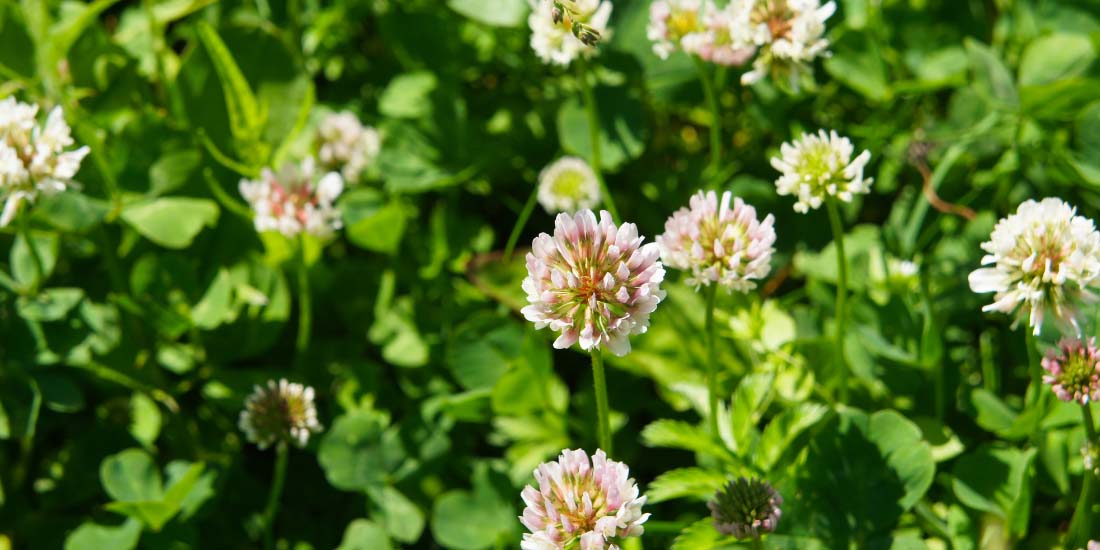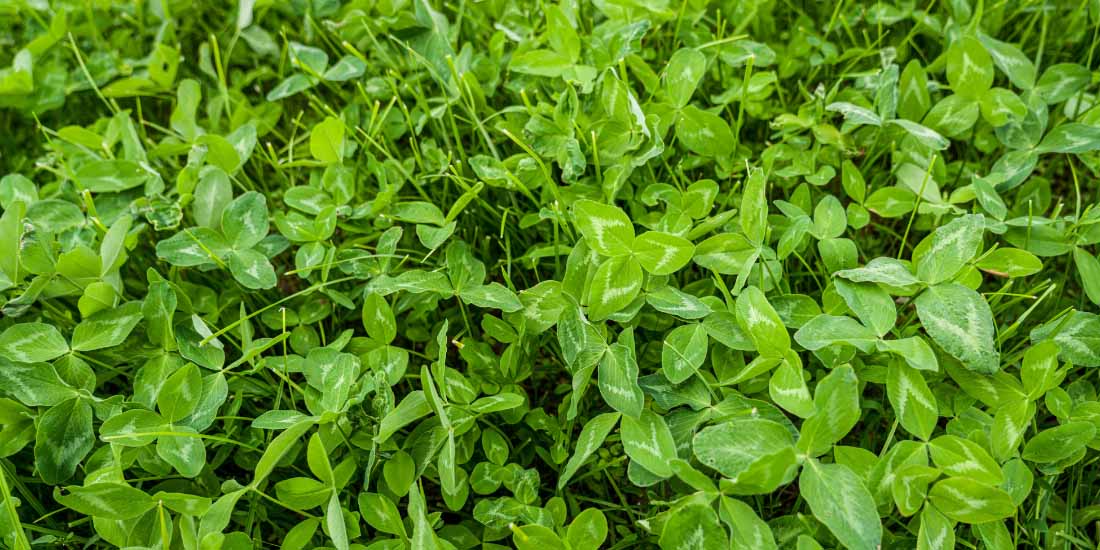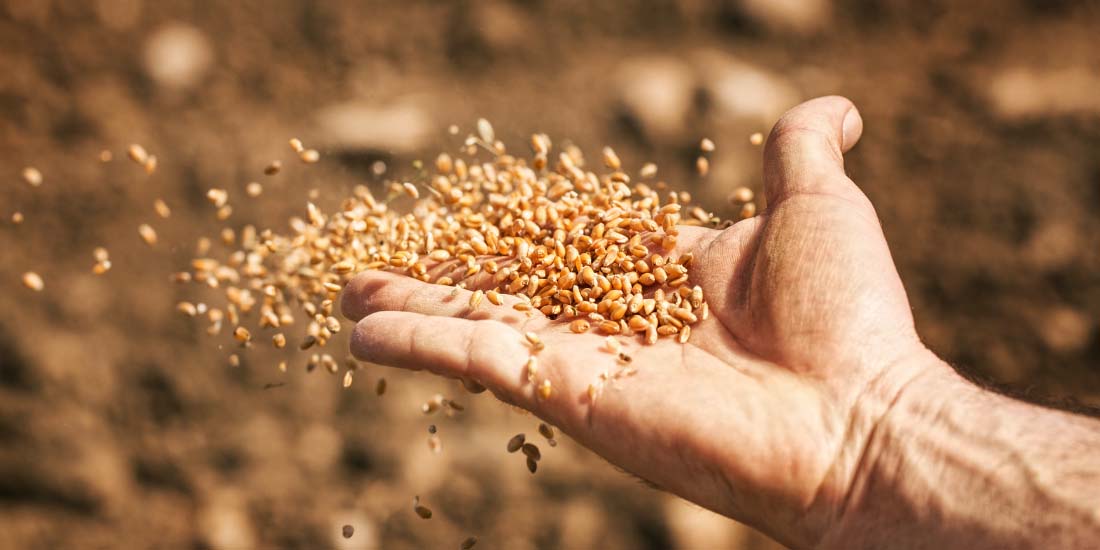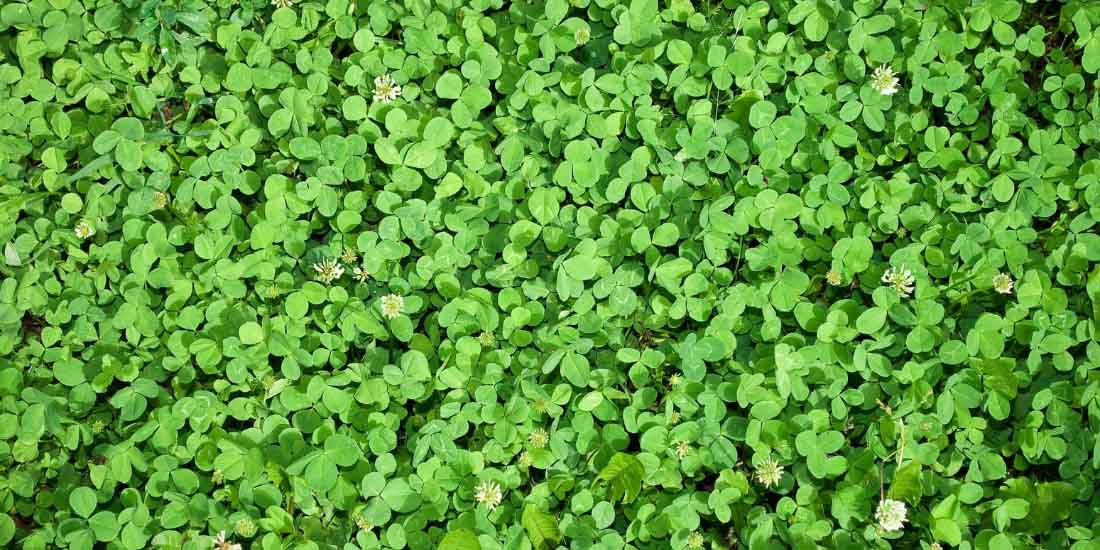How to grow a clover lawn
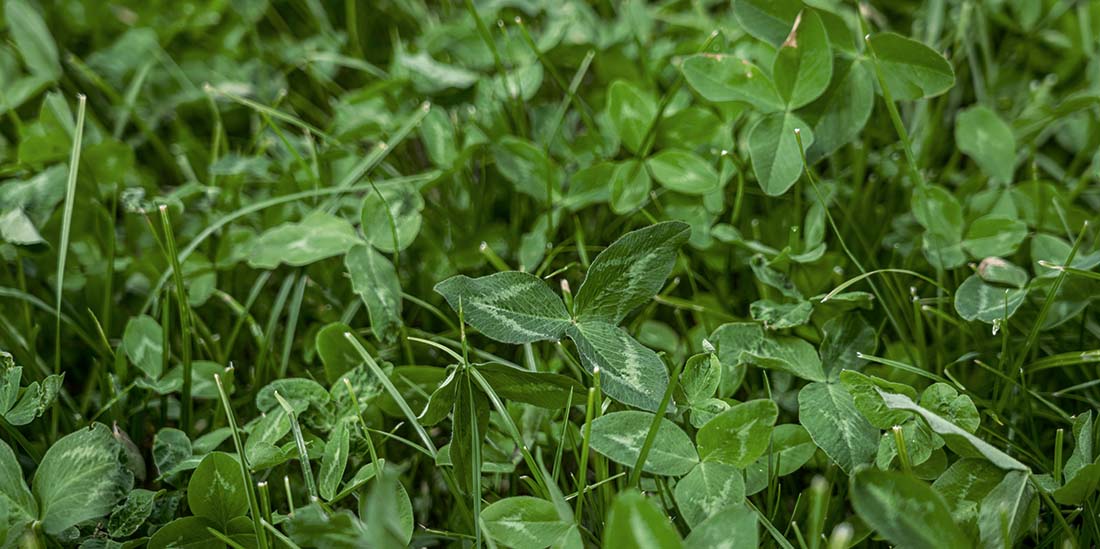
Growing a clover lawn will boost the health of your soil, is great for bees and pollinators and opens the door to a more sustainable approach to lawn care. While it offers a new approach, you can keep yours the same – growing a clover lawn is as easy as growing regular grass seed!
Benefits of growing a clover lawn
Delivering a climate-smart solution, growing a clover lawn could be the answer for those looking to go the extra mile for the environment. Clover fights against nitrous oxide pollution and converts or ‘fixes’ nitrogen in the air and shares it through its roots, and then uses it to feed itself and any companion grass seed growing around it.
Alongside supporting the environment, growing a clover lawn also helps bees and pollinators. The white clover flowers shoot up when fully grown, providing a habitat for them to enjoy.
Why our clover is special
Our clover is a resilient, hardy and beautiful small-leaved clover that is drought tolerant and grows well in most soil conditions.
This enables our seedling to grow a tap root that forms deep inside the soil and breaks down, causing new stems to travel along the ground. These roots then spread out and create new plants along them. Unlike traditional white clover that would be left open to drought and cold conditions, the unique double rooting system enables roots to grow under the surface of these new plants. This allows them to grow in a broader range of climates and maintain growth even when water is limited!
Advantages of Planting a Clover Lawn
Resilient in Drought Conditions:
An exceptional trait of clover is its remarkable ability to withstand drought. Even during periods of limited rainfall or heatwaves that may prompt water restrictions, clover lawns maintain their vibrant appearance and demand less water compared to traditional grass lawns. Opting for clover ensures a low-maintenance, lush green garden all year long.
Natural Nitrogen Enrichment:
Clover, as a legume plant, possesses a unique capability to harness nitrogen from the air and convert it into a usable form for itself and nearby plants. This natural nitrogen enrichment minimizes the necessity for fertilizers, promoting a sustainable approach to achieving healthier soil and reducing environmental impact.
Minimal Upkeep:
Clover lawns exhibit a slower growth rate than grass, translating to less frequent mowing required. The dense clover coverage also acts as a barrier against weed growth, further reducing maintenance requirements. Occasional mowing is solely needed to maintain the desired height of the grass within the seed mix.
Haven for Pollinators:
Delicate white clover flowers create a sanctuary for bees, butterflies, and other vital pollinators. Establishing a clover lawn contributes to the visual appeal of your garden, fosters local ecosystems, and promotes biodiversity.
Environmentally Responsible Choice:
Selecting a clover lawn underscores your dedication to eco-friendly landscaping. Reduced water consumption and a diminished carbon footprint position clover lawns as a intelligent option for homeowners who prioritize environmental sustainability.
Tips for growing a clover lawn
To sow clover, simply use your hand to scatter the seeds across your lawn. When planting a new clover lawn, we recommend sowing at a rate of 50g per m2.
Sowing a new clover lawn
- Dig the soil over to a depth of 20-25cm
- Remove weeds by hand or use a weed killer
- Add topsoil if you believe the soil to be poor quality
- Rake the area to get a level seedbed
- Allow the seedbed to cultivate for 10-14 days to encourage dormant weeds to come to the surface, then remove any weeds that appear by hand.
- Sow the seed at our recommended rate of 50g per m2
- Rake the seed in after sowing so that the seed is in amongst the soil
- Firm down by foot or by using a roller to improve seed-to-soil contact
Sow between 5mm and 10mm beneath the surface. A good rule to follow is to have the seed covered in the soil with the thickness of three £1 coins stacked together.
Caring for your clover lawn after sowing
Clover is a wild plant that requires incredibly low maintenance, and aside from some essential care, any love you show your new clover lawn is down to personal preference!
Essential Lawn Care
- Watering
The essential bit (at the start). Water your clover regularly for the first four weeks until you have a fully established lawn because keeping clover seeds moist speeds up their germination rate. Thanks to its clever rooting system, clover doesn't need to be watered as often as regular grass seed; this means it's ideal for those wanting to cut back on water usage!
Optional Extra Care
- Mowing
Clover lawns are low-growing, meaning you can keep their contact with your mower to a minimum. If you decide to mow your clover lawn, you only need to set your mower to the correct height for mowing your grass!
Things to avoid when growing a clover lawn
- Feeding
Clover is a wild plant that outgrows typical garden weeds on your lawn, but for those pesky weeds that remain, take the time to remove them by hand and don’t be tempted to use a Feed, Weed & Mosskiller product because this will target the clover! Also, with its nitrogen-fixing ability, a clover lawn will convert more than enough nitrogen to keep your garden green and healthy without the help of any additional fertiliser!
Our post on tips for sowing a clover lawn and advice for scattering clover lawn seeds on grass provide further reading on this stunning and beneficial plant.
Want to compare clover to regular grass seed? Find out what grass seed is right for you!
